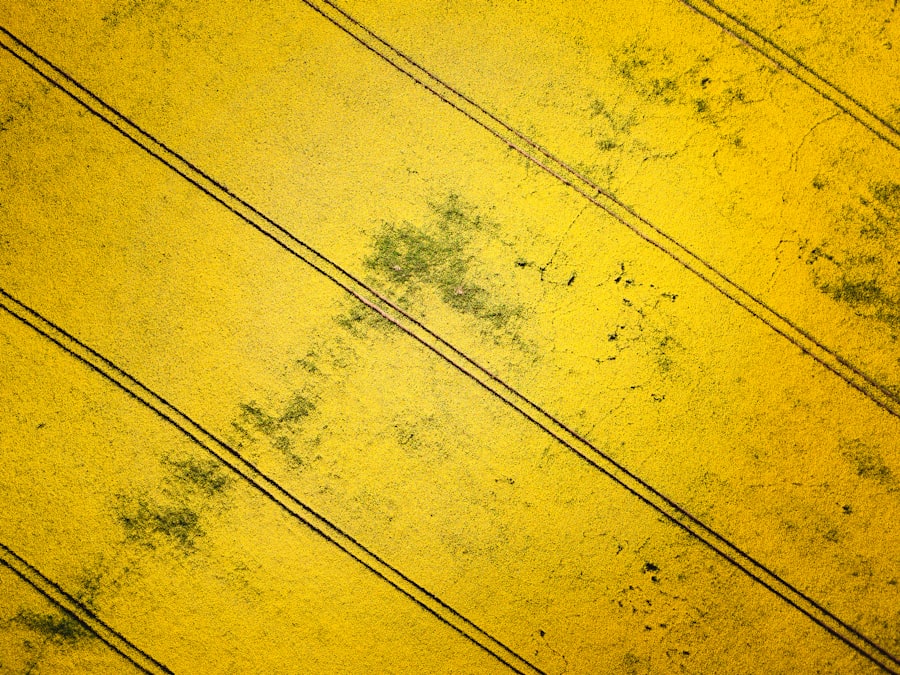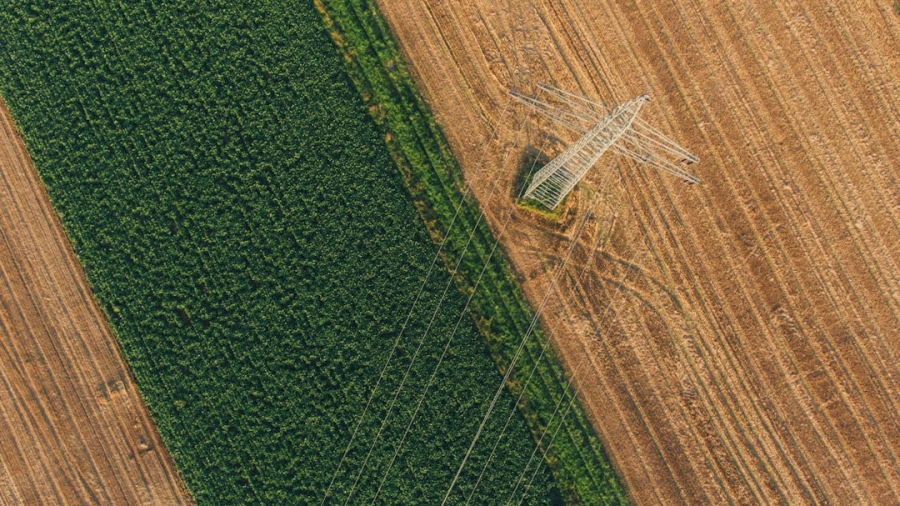Drones, also known as unmanned aerial vehicles (UAVs), have emerged as a transformative technology in the agricultural sector. These remotely operated aircraft are equipped with advanced sensors and high-resolution cameras, enabling farmers to gather precise data about their fields, crops, and livestock. The implementation of drones in agriculture offers numerous benefits, including improved efficiency, cost reduction, and minimized environmental impact.
The primary advantage of using drones in farming is the ability to collect real-time data and imagery, which allows for more informed decision-making regarding irrigation, fertilization, and pest control. This technology has the potential to significantly increase agricultural productivity while reducing the ecological footprint of farming practices. As drone technology becomes more accessible and affordable, its adoption in agriculture is expected to grow rapidly.
However, the integration of drones into farming operations also presents challenges and limitations that must be addressed. These include regulatory compliance, data management, and the need for specialized training. This article will provide a comprehensive overview of the applications, benefits, challenges, and regulatory landscape surrounding the use of drones in agriculture.
Additionally, it will explore future developments in drone technology and offer practical recommendations for farmers considering the implementation of UAVs in their operations.
Key Takeaways
- Drones are increasingly being used in agriculture for various purposes such as crop monitoring, irrigation management, and soil analysis.
- The benefits of using drones in agriculture include increased efficiency, cost savings, and improved crop yields.
- Drones are being used in agriculture for applications such as crop spraying, aerial seeding, and livestock monitoring.
- Challenges of using drones in agriculture include limited flight time, regulatory restrictions, and the need for specialized training.
- Regulations and policies for drones in agriculture vary by country and can impact the use of drones for agricultural purposes.
Benefits of Using Drones in Agriculture
Accurate Data Collection
One of the most significant advantages is the ability to collect high-resolution imagery and data of fields and crops. Drones equipped with cameras and sensors can capture detailed images that provide valuable insights into crop health, soil conditions, and irrigation needs.
Targeted Action and Increased Efficiency
This data can help farmers identify areas of concern, such as pest infestations or nutrient deficiencies, allowing them to take targeted action to address these issues. Additionally, drones can cover large areas of land in a short amount of time, providing farmers with a comprehensive view of their operations. By using drones to monitor crops and livestock, farmers can identify problems early on and take proactive measures to address them. This can lead to higher yields and reduced input costs, as well as minimize the need for manual labor.
Optimized Farming Operations
Drones can also be used to create precise maps of fields, which can help farmers optimize their planting and harvesting processes. Overall, the use of drones in agriculture has the potential to improve productivity, reduce operational costs, and minimize environmental impact.
Applications of Drones in Agriculture

Drones have a wide range of applications in agriculture, from crop monitoring to livestock management. One of the most common uses of drones is for crop scouting and monitoring. Drones equipped with cameras and sensors can capture high-resolution images of fields, allowing farmers to assess crop health, identify areas of concern, and make informed decisions about irrigation and fertilization.
This can help farmers optimize their inputs and maximize yields while minimizing environmental impact. In addition to crop monitoring, drones can also be used for precision agriculture practices such as variable rate application of inputs. By using drones to create detailed maps of fields, farmers can identify areas with specific needs for irrigation, fertilization, or pest control.
This allows for targeted application of inputs, reducing waste and minimizing environmental impact. Drones can also be used for planting and seeding, as well as for monitoring soil conditions and moisture levels. Furthermore, drones have applications in livestock management.
Drones equipped with thermal imaging cameras can be used to monitor the health and behavior of livestock, as well as to identify potential issues such as missing animals or predator activity. This can help farmers improve their animal husbandry practices and ensure the well-being of their livestock.
Challenges of Using Drones in Agriculture
While the use of drones in agriculture offers many benefits, there are also challenges and limitations that must be considered. One of the main challenges is the cost associated with acquiring and operating drones. While the price of drones has decreased in recent years, they still represent a significant investment for many farmers.
In addition to the initial cost of purchasing a drone, there are also ongoing expenses for maintenance, training, and software updates. Another challenge is the complexity of data collection and analysis. While drones can capture high-resolution imagery and data, it can be challenging for farmers to interpret this information and make actionable decisions.
There is a need for user-friendly software and tools that can help farmers analyze drone data and integrate it into their decision-making processes. Furthermore, there are regulatory challenges associated with the use of drones in agriculture. In many countries, there are strict regulations governing the use of drones, particularly when it comes to flying over agricultural land.
Farmers must navigate these regulations and obtain the necessary permits and permissions in order to use drones legally.
Regulations and Policies for Drones in Agriculture
The use of drones in agriculture is subject to a variety of regulations and policies that vary by country and region. In many countries, there are strict rules governing where drones can be flown, how high they can fly, and what kind of data they can collect. These regulations are designed to ensure safety and privacy, as well as to minimize the risk of interference with other aircraft.
In addition to general aviation regulations, there are also specific rules that apply to the use of drones in agriculture. For example, in the United States, the Federal Aviation Administration (FAA) has established guidelines for commercial drone operations, including those related to agriculture. Farmers must obtain a remote pilot certificate from the FAA in order to operate a drone for agricultural purposes, as well as comply with restrictions on flying over people or beyond visual line of sight.
It is important for farmers to familiarize themselves with the regulations and policies that apply to drone use in their area before integrating this technology into their operations. By understanding the legal requirements and obtaining the necessary permits and permissions, farmers can ensure that they are using drones in compliance with the law.
Future of Drones in Agriculture

Advancements in Drone Technology
As drones become more affordable and accessible, their use is expected to continue to grow. In addition to capturing high-resolution imagery and data, future drones may be equipped with advanced sensors that can provide even more detailed insights into crop health and soil conditions.
Artificial Intelligence and Data Analysis
Furthermore, advancements in artificial intelligence (AI) and machine learning have the potential to revolutionize the way drone data is analyzed and utilized. AI-powered software can help farmers interpret drone imagery and make informed decisions about their operations. This technology has the potential to streamline data analysis processes and provide actionable insights that can improve productivity and efficiency.
Regulatory Changes and Future Possibilities
In addition to technological advancements, there is also potential for regulatory changes that could further facilitate the use of drones in agriculture. As governments recognize the benefits of drone technology for farming, they may implement policies that make it easier for farmers to obtain permits and operate drones legally.
Conclusion and Recommendations
In conclusion, the use of drones in agriculture offers a wide range of benefits for farmers, including increased efficiency, cost savings, and improved decision-making. Drones have applications in crop monitoring, precision agriculture practices, livestock management, and more. However, there are also challenges associated with the use of drones in agriculture, including cost, data analysis complexity, and regulatory hurdles.
To successfully integrate drones into their operations, farmers should familiarize themselves with the regulations and policies that apply to drone use in their area. It is important to obtain the necessary permits and permissions before operating a drone for agricultural purposes. Additionally, farmers should invest in user-friendly software and tools that can help them analyze drone data and make informed decisions about their operations.
As technology continues to advance and regulations evolve, the future of drones in agriculture looks promising. Farmers who embrace this technology stand to benefit from increased productivity, reduced costs, and minimized environmental impact. By staying informed about advancements in drone technology and regulatory changes, farmers can position themselves for success in an increasingly digital agricultural landscape.
In exploring the advancements in agricultural technology, particularly the use of drones, it’s beneficial to consider related technological trends that could influence or enhance these developments. An insightful article that complements the discussion on drones in agriculture is found on the topic of emerging trends in technology. You can read more about these trends, which may include innovations in software and hardware that could further optimize the use of drones in farming, by visiting Top Trends on LinkedIn 2023. This article provides a broader view of the technological landscape in 2023, offering a context for understanding how drones fit into the larger picture of tech advancements.
FAQs
What are drones in agriculture?
Drones in agriculture are unmanned aerial vehicles equipped with various sensors and cameras that are used to collect data and monitor crops and fields.
What are the opportunities of using drones in agriculture?
Using drones in agriculture can provide opportunities for precision farming, crop monitoring, pest control, and irrigation management. Drones can also help in reducing the time and cost of field inspections.
What are the challenges of using drones in agriculture?
Challenges of using drones in agriculture include regulatory restrictions, privacy concerns, limited flight time, and the need for skilled operators. Additionally, the initial investment in drone technology can be a barrier for some farmers.
How do drones benefit agriculture?
Drones benefit agriculture by providing farmers with real-time data on crop health, soil conditions, and irrigation needs. This allows for more efficient and targeted use of resources, leading to increased yields and reduced environmental impact.
What types of drones are used in agriculture?
Drones used in agriculture can vary in size and capabilities, but commonly used types include fixed-wing drones, multi-rotor drones, and hybrid drones. Each type has its own advantages and limitations for different agricultural applications.

